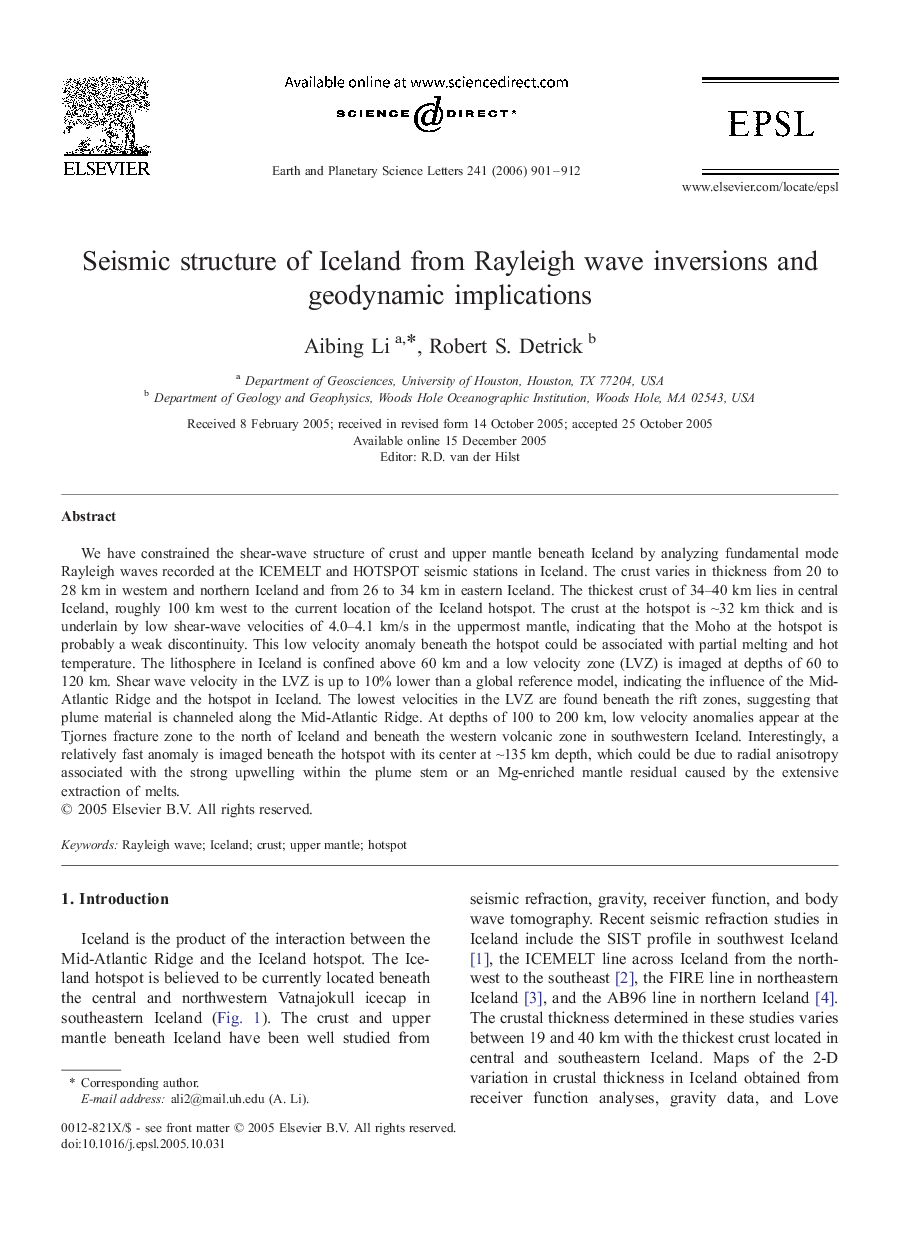| Article ID | Journal | Published Year | Pages | File Type |
|---|---|---|---|---|
| 4681227 | Earth and Planetary Science Letters | 2006 | 12 Pages |
We have constrained the shear-wave structure of crust and upper mantle beneath Iceland by analyzing fundamental mode Rayleigh waves recorded at the ICEMELT and HOTSPOT seismic stations in Iceland. The crust varies in thickness from 20 to 28 km in western and northern Iceland and from 26 to 34 km in eastern Iceland. The thickest crust of 34–40 km lies in central Iceland, roughly 100 km west to the current location of the Iceland hotspot. The crust at the hotspot is ∼32 km thick and is underlain by low shear-wave velocities of 4.0–4.1 km/s in the uppermost mantle, indicating that the Moho at the hotspot is probably a weak discontinuity. This low velocity anomaly beneath the hotspot could be associated with partial melting and hot temperature. The lithosphere in Iceland is confined above 60 km and a low velocity zone (LVZ) is imaged at depths of 60 to 120 km. Shear wave velocity in the LVZ is up to 10% lower than a global reference model, indicating the influence of the Mid-Atlantic Ridge and the hotspot in Iceland. The lowest velocities in the LVZ are found beneath the rift zones, suggesting that plume material is channeled along the Mid-Atlantic Ridge. At depths of 100 to 200 km, low velocity anomalies appear at the Tjornes fracture zone to the north of Iceland and beneath the western volcanic zone in southwestern Iceland. Interestingly, a relatively fast anomaly is imaged beneath the hotspot with its center at ∼135 km depth, which could be due to radial anisotropy associated with the strong upwelling within the plume stem or an Mg-enriched mantle residual caused by the extensive extraction of melts.
